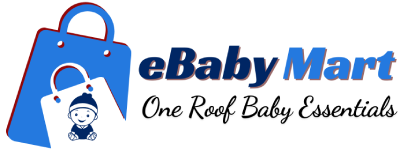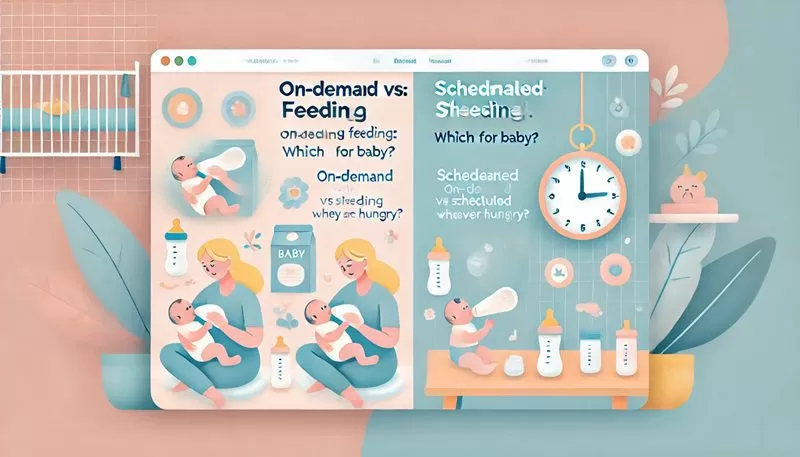Table of Contents
On-Demand Scheduled Feeding Baby
When it comes to feeding your baby, there’s no one-size-fits-all approach. Two of the most common methods are on-demand feeding and scheduled feeding. As a parent, choosing the right approach for your baby can be overwhelming. Each method has its own set of benefits and challenges, and the best choice depends on your baby’s needs and your family’s lifestyle. In this guide, we’ll explore both feeding methods, discussing the honest pros and cons of demand feeding vs. scheduled bottle feeding, to help you make an informed decision. Plus, we’ll suggest some great products from [your store] to make feeding time easier and more efficient.
When it comes to feeding your baby, understanding the differences between on-demand and scheduled feeding can be crucial. According to experts, both approaches have their pros and cons, but each baby is unique in their needs. For a deeper dive into the benefits of different feeding schedules and how they align with pediatric guidelines, check out this comprehensive resource on best baby feeding practices from the American Academy of Pediatrics. This can provide you with expert-backed insights to help make the best decision for your baby’s health and development.
As your baby grows, the transition from milk to solid foods is another significant milestone in their development. While feeding on demand or following a schedule is crucial during the early months, introducing solids brings its own set of challenges. To ensure this transition is smooth and stress-free, it’s important to know the best approach. For helpful tips on starting solids, check out our comprehensive guide, Introducing Solids Without the Stress: A Guide for Parents, which covers everything from first foods to creating a relaxed mealtime environment for both you and your baby.
Understanding On-Demand Feeding

On-demand feeding means responding to your baby’s hunger cues and feeding them whenever they seem hungry, whether it’s breastfeeding or bottle feeding. This method is flexible and allows babies to set their own feeding schedule based on their needs. Many parents find this method intuitive, as it lets babies control their intake and often leads to less crying or frustration.
Benefits of On-Demand Feeding:
- Fosters bonding: Feeding your baby when they signal hunger can help you respond to their needs more quickly, which can strengthen the parent-child bond.
- Supports natural appetite regulation: Babies are good at self-regulating how much they eat, and on-demand feeding allows them to eat as much as they need without being overfed.
- Helps with milk supply: For breastfeeding moms, feeding on demand can help establish and maintain a steady milk supply.
However, on-demand feeding can also have its challenges. The unpredictability of the schedule can be difficult for parents who prefer routine or who need more structure in their day.
For moms looking to make on-demand feeding more manageable, our Nursing Pillow provides comfort and support during breastfeeding, helping you stay comfortable while feeding your baby at any time of the day.
While deciding between on-demand and scheduled feeding, many parents also face the challenge of transitioning their baby from breastfeeding to bottle feeding. Making this transition smoother can help ensure that both baby and parent adapt comfortably. For helpful advice on how to navigate this process and ease your baby’s shift to bottle feeding, check out our guide on Breast to Bottle: Tips for Transitioning to Bottle Feeding. It offers practical tips to ensure the switch is as seamless as possible.
Scheduled Feeding: A More Predictable Approach

Scheduled feeding, as the name suggests, involves feeding your baby at regular intervals throughout the day, whether they show signs of hunger or not. Typically, this is every 2 to 4 hours, depending on the baby’s age and feeding requirements. This method can help establish a routine that some parents find easier to manage, especially in households with multiple children or for working parents who need to coordinate their day.
Benefits of Scheduled Feeding:
- Predictability: A set feeding schedule allows you to plan your day, knowing when your baby will need to eat, which can be especially helpful for parents returning to work.
- Better sleep patterns: Some parents find that scheduled feeding can help babies develop more regular sleep patterns as they get used to a consistent daily routine.
- Allows shared responsibilities: Scheduled feeding can make it easier for other caregivers to help feed the baby, as they know exactly when the baby will need to eat.
However, this method can sometimes lead to frustration if the baby is not hungry at the scheduled time or becomes upset waiting for the next feed. Parents need to find a balance that works for their baby’s needs.
To assist with scheduled feeding, you can check out our Digital Baby Bottle Warmer, which ensures your baby’s bottle is always ready at the scheduled time. This device helps maintain the correct temperature, ensuring your baby’s milk is always warm and soothing.
Honest Pros and Cons of Demand Feeding Vs Scheduled Bottle Feeding?

When comparing on-demand breastfeeding vs. scheduled feeding, it’s essential to weigh the pros and cons of both methods. One isn’t necessarily better than the other—it all comes down to what works best for your baby and family.
On-Demand Feeding Pros:
- Flexibility: No need to stick to a rigid schedule.
- Baby-Led: Babies control how much they eat and when.
- Milk Supply: For breastfeeding, it helps establish a good milk supply.
On-Demand Feeding Cons:
- Unpredictability: You may need to feed your baby at any time, which can interrupt daily tasks or sleep.
- Demanding for parents: It requires you to be available whenever your baby is hungry.
Scheduled Feeding Pros:
- Predictable Routine: Easier for planning the day, especially for working parents.
- Shared Care: Easier to share feeding responsibilities with other caregivers.
- Sleep Training: Some parents find that it helps regulate sleep patterns.
Scheduled Feeding Cons:
- Rigidity: If your baby isn’t hungry at the scheduled time, you may end up with a frustrated baby or wasted milk.
- Less Flexibility: It can be harder to adapt to changes in your baby’s hunger levels or needs.
If you’re considering bottle-feeding as part of your schedule, our Leak-Proof Baby Bottles are ideal for preventing spills and ensuring that your baby gets the perfect feed every time.
Feeding Your Baby on a Schedule vs. On-Demand: Pros and Cons

Choosing between feeding your baby on a schedule vs. on-demand is often a personal decision. The flexibility of on-demand feeding may appeal to some, while the structure of scheduled feeding may suit others. Here are a few considerations to keep in mind:
- Baby’s temperament: Some babies thrive on routine, while others may need the flexibility to feed as and when they are hungry.
- Parental lifestyle: For stay-at-home parents, on-demand feeding might be easier to manage. For working parents, a set schedule might provide the structure needed to balance work and baby care.
- Health concerns: Some babies with medical conditions may need to be fed more frequently or on a strict schedule. In these cases, consulting with a pediatrician is crucial.
On-Demand Breastfeeding vs. Scheduled: How to Figure Out What’s Right for Your Baby and You!

Deciding between on-demand breastfeeding vs. scheduled feeding comes down to observing your baby’s needs and your own comfort level. Here are a few questions to ask yourself when determining the best method:
- How does your baby react? Is your baby content with feeding on demand, or do they seem fussy without a routine?
- How is your milk supply? If you’re breastfeeding, is your supply steady, or are you worried about producing enough milk?
- What’s your daily schedule like? Does your day require more structure, or are you flexible with feeding times?
The best feeding method is the one that keeps your baby happy and healthy while fitting into your lifestyle. To ensure you’re ready for whatever feeding method you choose, consider using our Breastfeeding Cover, perfect for on-demand feeding in public, or our Portable Formula Dispenser for scheduled bottle feeds on the go.
For new parents, feeding decisions can feel overwhelming, especially when it comes to choosing between on-demand or scheduled feeding. Each approach has its own benefits, and understanding what works best for you and your baby is key. If you’re breastfeeding, ensuring a smooth and successful start is crucial. Check out our Breastfeeding Guide: How to Get Off to a Great Start to learn essential tips and techniques that can help you build a strong foundation for nourishing your baby from day one.
Conclusion: Which Feeding Method Is Right for You?
There’s no universal right or wrong when it comes to feeding your baby. Both on-demand and scheduled feeding have their advantages, and the best choice depends on what works for your baby’s temperament and your family’s routine. By weighing the honest pros and cons of demand feeding vs. scheduled bottle feeding, you’ll be better equipped to make an informed decision that works for you and your little one.
Whether you choose to feed your baby on-demand or on a schedule, having the right products can make the process easier. Check out our Nursing Pillow, Digital Baby Bottle Warmer, and Leak-Proof Baby Bottles to support your feeding journey.

